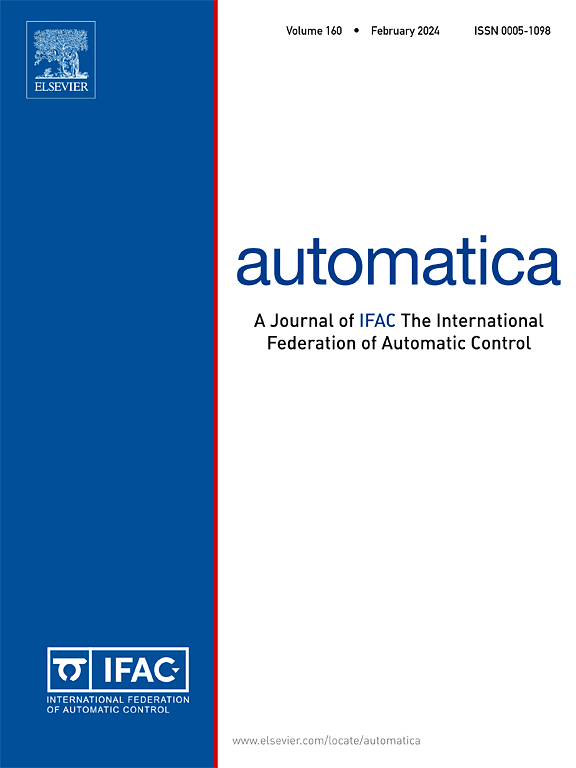Herdability of switching signed networks
IF 4.8
2区 计算机科学
Q1 AUTOMATION & CONTROL SYSTEMS
引用次数: 0
Abstract
This paper investigates the herdability of switching signed networks, in which the interaction topologies are undirected, weighted, and switching. First, the basic theory of herdable switching networks is presented, including a necessary and sufficient condition for herdability. Subsequently, some necessary and/or sufficient conditions are derived from the union graph perspective. Moreover, switching generalized equitable partition, defined in this paper, is developed to characterize the controllable subspace of networks, from which sufficient conditions for herdability are established. It is demonstrated that the switching quotient graph can be exploited to infer the herdability of the original switching graph. Furthermore, focusing on simultaneously structurally balanced networks, a switching walk sequence is leveraged to provide a leader selection method to ensure the herdability of the networks. Finally, several examples are given to illustrate the effectiveness of the theoretical results.
求助全文
约1分钟内获得全文
求助全文
来源期刊

Automatica
工程技术-工程:电子与电气
CiteScore
10.70
自引率
7.80%
发文量
617
审稿时长
5 months
期刊介绍:
Automatica is a leading archival publication in the field of systems and control. The field encompasses today a broad set of areas and topics, and is thriving not only within itself but also in terms of its impact on other fields, such as communications, computers, biology, energy and economics. Since its inception in 1963, Automatica has kept abreast with the evolution of the field over the years, and has emerged as a leading publication driving the trends in the field.
After being founded in 1963, Automatica became a journal of the International Federation of Automatic Control (IFAC) in 1969. It features a characteristic blend of theoretical and applied papers of archival, lasting value, reporting cutting edge research results by authors across the globe. It features articles in distinct categories, including regular, brief and survey papers, technical communiqués, correspondence items, as well as reviews on published books of interest to the readership. It occasionally publishes special issues on emerging new topics or established mature topics of interest to a broad audience.
Automatica solicits original high-quality contributions in all the categories listed above, and in all areas of systems and control interpreted in a broad sense and evolving constantly. They may be submitted directly to a subject editor or to the Editor-in-Chief if not sure about the subject area. Editorial procedures in place assure careful, fair, and prompt handling of all submitted articles. Accepted papers appear in the journal in the shortest time feasible given production time constraints.
 求助内容:
求助内容: 应助结果提醒方式:
应助结果提醒方式:


